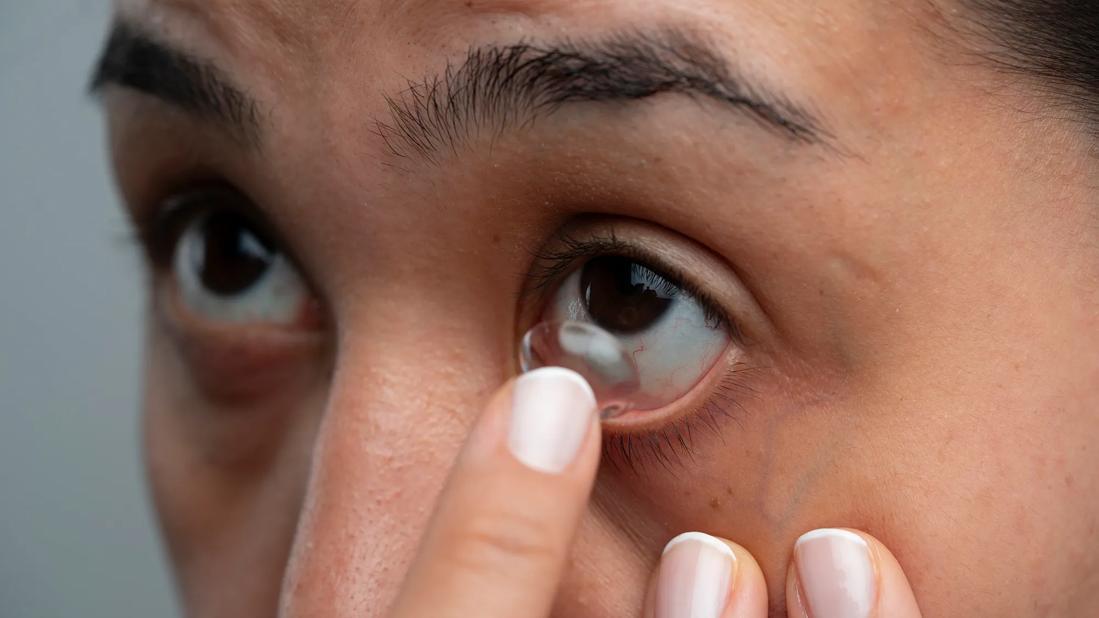Understanding the Link Between Contacts and Dry Eyes
When worn incorrectly, contacts can cause or worsen dry eye symptoms

Many people wear contact lenses to see more clearly because contacts are safe and easy to use. But if you’ve got evaporative dry eye, contacts can feel uncomfortable and make your symptoms worse.
Optometrist Alexandra Williamson, OD, explains the connection between contacts and dry eyes and offers some at-home solutions.
Contact lenses and dry eyes
Wearing contact lenses can increase your risk of dry eyes, especially as you get older or wear the same pair for long periods. Dr. Williamson says these factors can make dryness worse for contact wearers:
- Incorrect fitting
- Wearing the same contacts for too long or overnight
- Eye allergies (like seasonal allergic conjunctivitis)
- Soft lenses might absorb too much of your tear film
- Hard lenses might create friction on your eyes
- Reduced airflow to your cornea (the clear, front part of your eye)
These issues thin out your tears and can make your eyes feel dry, gritty or irritated — especially by the end of the day. Wearing contact lenses long term generally causes the low-level inflammation associated with dry eyes. So, the longer you wear them, the higher the risk of experiencing the following symptoms:
- Stinging
- Burning
- Redness
- Blurred vision
- Sensitivity to light
Some people feel like there’s sand or grit in their eyes. Others may experience watery eyes as a reflex response. If you notice these signs, especially after wearing contacts, it may be time to talk to your eye care provider.
Tips to combat dry eyes with contacts
If you wear contacts, these strategies can help treat and prevent dry eyes:
- Follow your doctor’s recommendations for wearing contacts (including daily lenses).
- Limit how long you wear the same pair of contacts and avoid wearing them when you sleep.
- Limit your amount of screen time or take frequent breaks when using digital screens.
- Use preservative-free, lubricating eye drops as prescribed.
- Keep contacts away from water.
- Wash your hands before putting in contacts. This helps prevent infections that can lead to dry eyes.
- Replace your contacts as directed and before the expiration date.
Alternative solutions for dry eyes with contacts
Healthcare providers may recommend you switch to using glasses while treating your dry eyes, as contacts can make symptoms worse. Your provider may prescribe specialized contact lenses to help ease your symptoms.
Hydrogel and water gradient lenses are thin lenses that hold water and keep your eyes moisturized. Scleral lenses are another type of contacts that rest on the white part of your eyes. These larger lenses collect a reservoir of tears and bring in oxygen. These can help your eyes stay clear and moist.
When to talk to a provider
“If you have dry eyes, make an appointment with your optometrist before trying solutions on your own,” advises Dr. Williamson. Your provider can check for underlying causes and recommend treatments like prescription eye drops, changes to your lenses or other therapies.
Don’t wait — untreated dry eye can lead to long-term discomfort and even long-term eye damage.